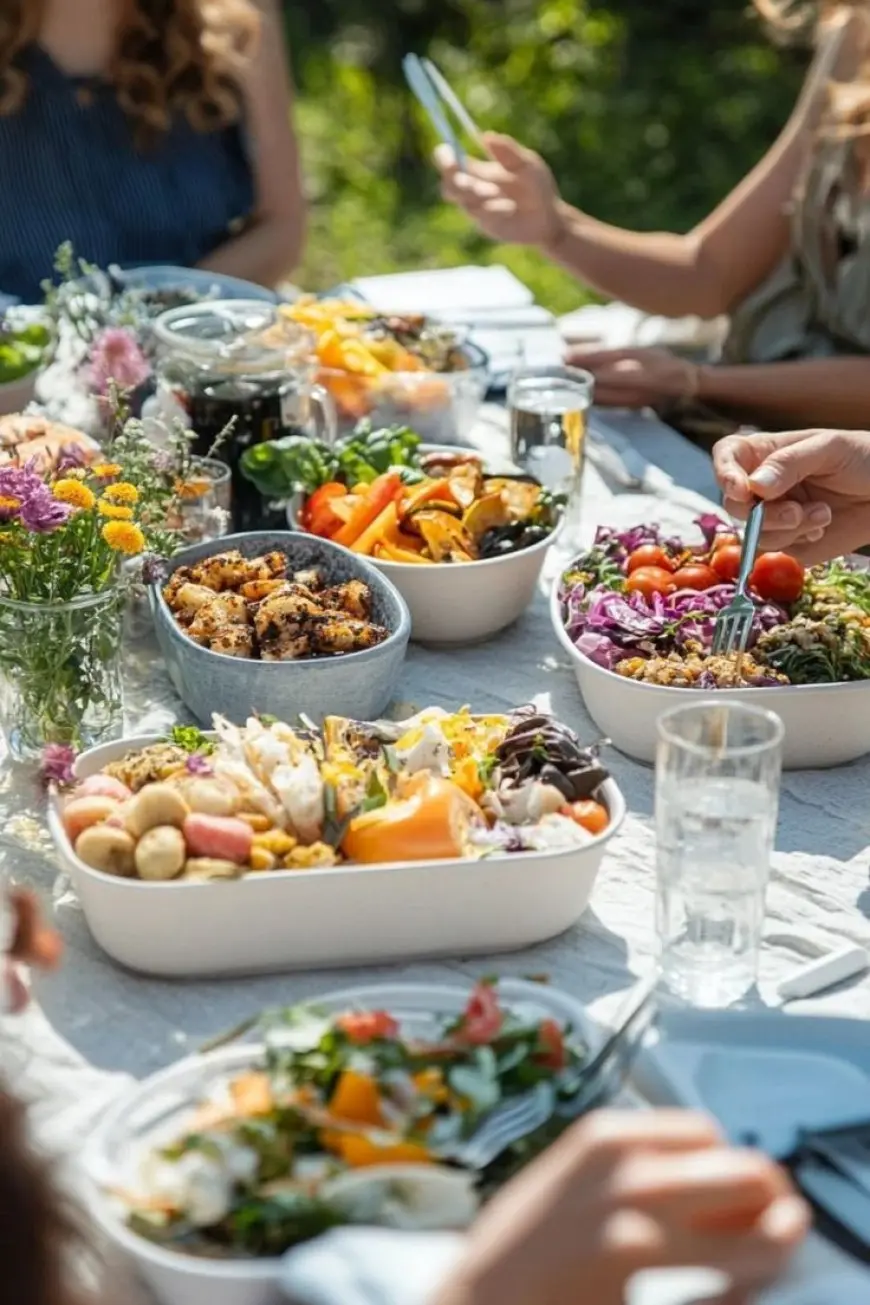How to Develop a Sustainable Eating Routine
How to Develop a Sustainable Eating Routine

Developing a sustainable eating routine is about creating long-term habits that prioritize balanced nutrition while considering environmental impact, personal well-being, and practical lifestyle needs. Unlike restrictive fad diets, a sustainable eating routine should feel enjoyable and adaptable to your life, helping you maintain a healthy relationship with food and reach your health goals over time.
Focus on Whole, Unprocessed Foods
A sustainable eating routine is built on the foundation of whole, minimally processed foods. Incorporating more fruits, vegetables, whole grains, legumes, nuts, seeds, and lean proteins into your meals ensures that you're getting a wide range of nutrients without relying on packaged or heavily processed foods. Whole foods are nutrient-dense, provide fiber, and support digestive health, making them essential for a sustainable eating routine.
Prioritize Plant-Based Foods
While including some animal-based products is fine for many people, plant-based foods are generally more sustainable both for your health and the environment. Incorporating more plant-based meals, such as vegetarian or vegan dishes, can reduce your environmental footprint by lowering carbon emissions and the use of resources like water. Plant-based foods like lentils, beans, tofu, and quinoa are excellent sources of protein, fiber, vitamins, and minerals.
Meal Prep for Consistency
One of the keys to developing a sustainable eating routine is preparation. By planning and prepping your meals in advance, you can avoid the temptation of unhealthy fast food or convenience snacks. Meal prepping allows you to portion out balanced meals and snacks for the week, ensuring that you have healthy options readily available. This also helps to reduce food waste by allowing you to use ingredients efficiently.
Be Mindful of Portion Sizes
Mindful eating is an important aspect of developing a sustainable eating routine. Pay attention to your body's hunger and fullness cues and avoid overeating. Using smaller plates, eating slowly, and savoring each bite can help you develop a healthier relationship with food. Additionally, balancing portion sizes of macronutrients (carbs, proteins, fats) ensures that your body is getting the right fuel without excess calories.
Choose Local and Seasonal Produce
Supporting local farmers and eating seasonal produce can make your eating routine more sustainable. Seasonal fruits and vegetables tend to be fresher, more affordable, and require fewer resources to grow and transport. Moreover, buying locally grown produce reduces your carbon footprint and supports sustainable agriculture.
Reduce Food Waste
A sustainable eating routine isn't just about what you eat but also about minimizing food waste. Properly storing food, using leftovers creatively, and composting scraps can significantly reduce waste. Being mindful of portion sizes and buying only what you need helps ensure that food doesn’t go to waste, contributing to a more sustainable approach to eating.
Stay Hydrated
Drinking plenty of water throughout the day is an often-overlooked component of a healthy eating routine. Staying hydrated supports digestion, energy levels, and overall well-being. Carrying a reusable water bottle and choosing water as your primary beverage can also reduce your environmental impact by cutting down on single-use plastic bottles.
Enjoy a Balanced Approach
A sustainable eating routine doesn’t require perfection, and it’s important to approach your diet with flexibility. While it’s helpful to focus on healthy foods most of the time, occasional indulgences are part of a healthy relationship with food. Don’t aim for restrictive rules or all-or-nothing thinking; instead, enjoy a balanced approach where healthy choices are the default, but flexibility is embraced.
Educate Yourself and Adapt
Take the time to learn about nutrition and how various foods affect your body. Understanding the role of different nutrients—such as protein, fiber, fats, and micronutrients—helps you make more informed food choices. Being adaptable and open to trying new foods and recipes can also keep your meals exciting and prevent you from feeling restricted.
Practice Sustainable Shopping
When developing a sustainable eating routine, how you shop matters. Look for organic and ethically sourced products when possible, and try to buy in bulk to reduce packaging waste. Supporting brands and products that prioritize sustainability can help you align your eating habits with a more eco-conscious lifestyle.
By focusing on whole, plant-based foods, preparing meals in advance, and practicing mindfulness in your eating habits, you can create a sustainable eating routine that works for both your health and the environment. Sustainable eating is about creating habits that can be maintained in the long term, not quick fixes or temporary diets. The goal is to find a routine that nourishes your body while







